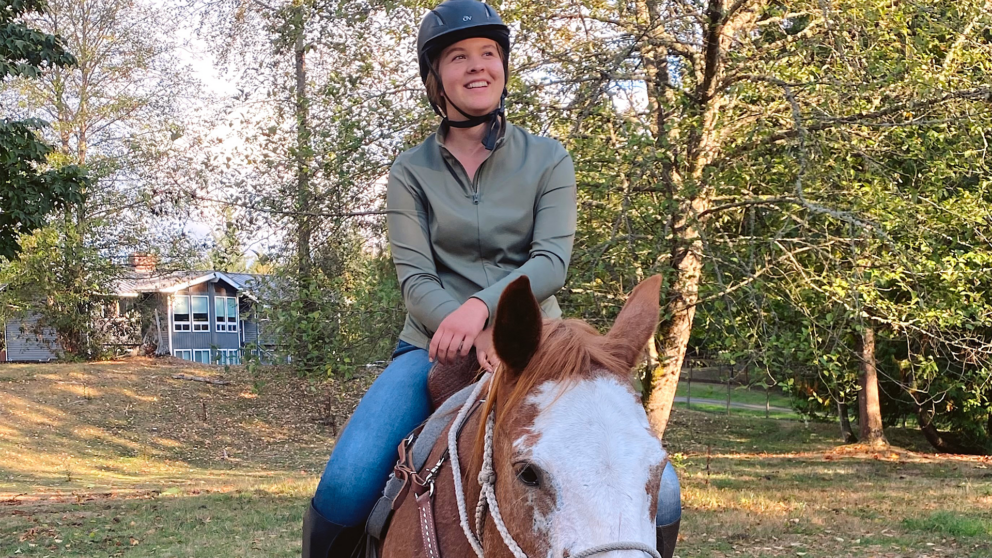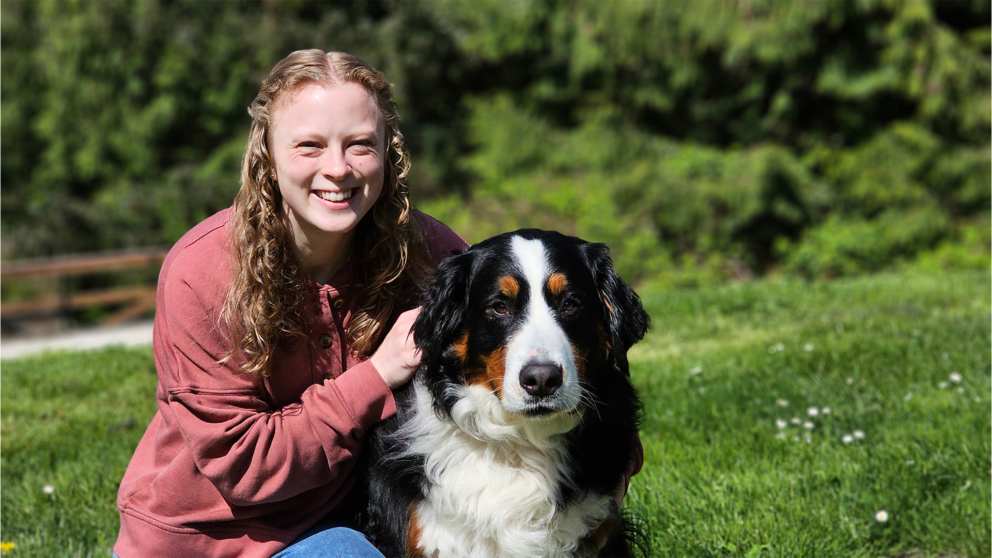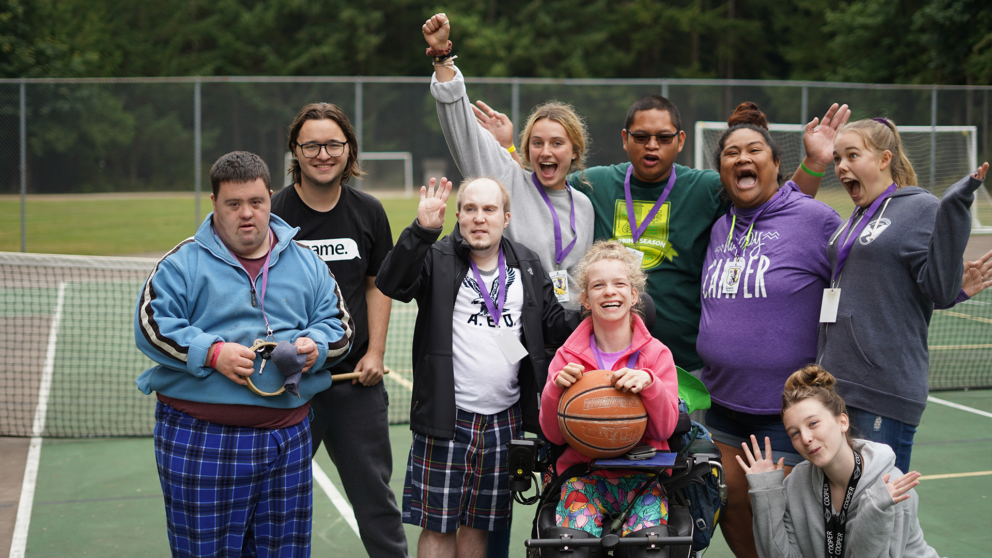Fifty Years of a Developing Dream – Part 1
Before the turn of the century, Free Methodists were already strong believers in camping. Their early camp meetings were usually ten days or longer, centering on revival meetings held in large tent “tabernacles.”
For over 50 years, Free Methodists in the Pacific Northwest enjoyed a variety of rustic campgrounds operated by the Washington Conference, located in sites such as Burlington and Tacoma, as well as Sunnyside and other central Washington locations.
A dream was born to have a modern Christian camp and conference center in the Pacific Northwest to keep pace with the expanding ministry of Christian camping. After a region-wide search, attention focused on three adjacent parcels of land located 20 miles north of Everett, Washington, overlooking Port Susan Bay.
On January 11, 1956, forty people gathered to plod through the 180 acres of land, which was home to a farm, an old saw mill, and acres of thick forest. The committee met later that day at a cafe in Marysville and voted to purchase the land. During the next year a master plan was developed, which called for a main conference grounds and two satellite youth camps.
By the spring of 1957 construction was underway on Cedar Lodge (then called the Dining Hall) and the Olympic View Cabins (now Mountain Cabins and Mini-Lodges). Dozens of volunteer work crews spent weekends and holidays working on these construction projects. The striking fir log beams in Cedar Lodge were painstakingly logged, hand-peeled and oiled as a part of this process.
By the summer of 1959, the first “pioneer” campers arrived at the developing campsite. With parts of Cedar Lodge still in skeleton form, a determined volunteer staff cooked, cleaned and counseled for two Christian Youth Crusader (CYC) youth camps. One year later, the first Free Methodist Family Camp and Annual Conference was held at the new Conference Center.
During the next seven years, extensive construction took place at Warm Beach, and at one point, twenty-seven buildings were under construction at the same time. In more recent years, Olympic View Lodge, Glacier Mini-Lodge, The Pines and Whistler Mini-Lodge have been added.
Today, more than 350 events are held on the grounds each year, with nearly 100,000 people enjoying the beauty and unique setting of Warm Beach Christian Camps and Conference Center.
By Bob McDowell, Executive Director Emeritus
Chapter One: Where Do You Put a New Christian Camp?
In 1955, the Washington (now Pacific Northwest) Conference of the Free Methodist Church, made an historic decision about their Christian camping program. They decided to “sell and start over” with a new facility that would bring to one location their scattered camping ministries.
At that time its youth camps were held in rented camp facilities in various locations in Washington and British Columbia. For their larger family camp meetings, they used two small campgrounds, one located in south Tacoma and the other in Burlington, Washington. Each campground occupied only about 10 acres, far too small to provide for the growing camping needs of even those early years.
With that decision made, action began. Within hours of the Conference authorization, the newly appointed Camp Ground Relocation Committee met during the Conference session at Burlington Camp. The date: July 28, 1955. A search team of three was charged with the job of locating possible sites for the larger group to consider.
At a meeting on September 6, there were already several properties that were listed as possibilities. Rev. Forest C. Bush, chair of the Relocation Committee, noted in a memo to the group that, “I have personally seen at least nine possible sites.” These ranged from the base of the Cascades westward and from Tacoma north to Everett.
It was at this meeting that it was decided to generally limit the locations to “Approximately Highway 10 (now Interstate 90) on the south, the Cascades on the east, Highway 2 on the north, and Puget Sound on the west.”
That this search work was seriously and fervently pursued is clearly attested to by the fact that at the November 11, 1955, meeting several lakefront sites were reported within the general area of definition given above, but there was not consensus on any of them.
Several public meetings (we’d call them focus groups now) were held to get input from the larger area membership of the denomination. They, too, failed to bring strong feeling of clear direction. All of this occurred within a period of less than four months!
Then another site came on the horizon that pushed the group to extend their search boundaries further northward. A realtor reported a piece of property near the community of Warm Beach, just four miles south of Stanwood. Few of the group knew where this was. The smaller search group looked over the property. Another realtor, looking over the property with the group, said, “This is one of the few significant view acreages left on northern Puget Sound!”
Still wanting to be sure they had the solid support of the larger church constituency, the committee called another public meeting of membership up and down the Puget Sound corridor. There the various property options, including the newly discovered “Warm Beach Property,” were presented to the assembled group. After discussion, a “straw vote” was taken to give the Relocation Committee direction.
There was little doubt of the feelings of group: 90% voted that the Committee pursue the Warm Beach property, with just 10% of the votes scattered among the other sites. The date of this meeting was January 7, 1956.
With the solid direction from the public meeting, the entire Relocation Committee, plus a number of additional invited people, were called to visit the site on January 11, just four days later. Nearly 40 people responded and were present. I was a young pastor who was included in the invitation.
You should have seen the group. Most of the pastors were in shirt, tie and suit. Don’t laugh – it was the uniform of the times. In spite of our dress clothes, we tramped over the property, clamored down over the nearly 200-foot bank to the beach area, and walked back around to the north where the stables and W-Bar-B Camp are now. There we encountered mud that messed up a lot of dress shoes and pulled off one of the ladies’ dress boots! I know, because it was my wife, Muriel, who filled her boots with mud!
Never mind nylons muddied and boots full of mud, from there we hiked up the hill about where the W-Bar-B Road is now and back onto the wonderful flat ground that is now the Conference Center area.
In spite of our clothes getting a bit messy, the entire group was excited with the possibilities of this property. We clearly felt that this could be God’s opportunity for the church to create a great place of ministry and blessing.
After the “inspection tour,” the Relocation Committee retired to the B & M Restaurant in Marysville for a formal business meeting. There, with a strong majority vote, the Relocation Committee took action to purchase the “Warm Beach Property,” subject to reviewing the technical issues of boundaries, etc.
In just 167 days from the day the Relocation Committee was authorized to act, it did act, and we had a new Christian Camp Center property in our possession – and in some of those early days we probably thought “on our hands!”
Where was this going to take us? Who would we serve? How would we develop it? Where was the money going to come from? What did God want of us in this new venture?
All of these were questions that would be wrestled with, and about which we will write in upcoming installments.



